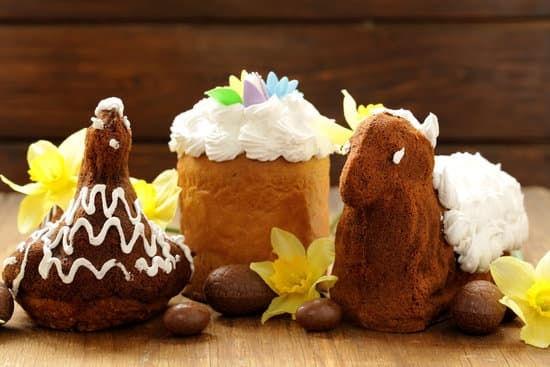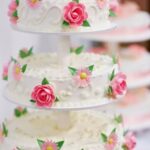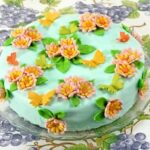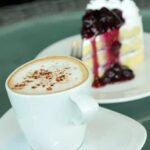The art of cake decorating is a mesmerizing world where creativity knows no bounds. Have you ever wondered, “What are cake decorations made of?” Cake decorations are crafted from a variety of ingredients and materials to create stunning designs that can elevate any cake to a work of art.
From edible options like fondant, buttercream, royal icing, gum paste, to non-edible choices such as plastic figurines or sugar flowers, the possibilities for decorating a cake are endless. Each type of decoration brings its own unique techniques and styles to the table, allowing bakers and decorators to showcase their creativity in different ways.
Whether you prefer classic buttercream roses, intricate royal icing designs, sculptural gum paste embellishments, or indulgent chocolate decorations, each element plays a vital role in transforming a simple cake into a masterpiece. Join us as we explore the fascinating world of cake decorating and discover the endless possibilities when it comes to adorning cakes with beautiful and delectable decorations.
Edible Cake Decorations
One common ingredient in edible cake decorations is fondant, a versatile mixture of sugar, water, and gelatin that can be rolled out and shaped into various designs. Fondant allows decorators to create smooth finishes, intricate patterns, and realistic figurines that add a touch of elegance to any cake.
Another popular choice for edible decorations is royal icing, made from powdered sugar, egg whites, and flavorings. Royal icing dries hard, making it perfect for creating delicate details like lace patterns or intricate floral designs.
For those looking for a more sculptural approach to cake decorating, gum paste is often used to create 3D figures, flowers, and other decorative elements. Made from powdered sugar, gelatin, and water, gum paste is pliable yet firm when dry, allowing decorators to mold it into intricate shapes with ease. These edible decorations not only enhance the visual appeal of a cake but also provide an extra layer of creativity and artistry to the overall design.
| Edible Cake Decorations Ingredients | Techniques |
|---|---|
| Fondant: sugar, water, gelatin | Rolling out shapes, creating figurines |
| Royal Icing: powdered sugar, egg whites | Creating delicate details like lace patterns |
| Gum Paste: powdered sugar, gelatin | Molding into intricate shapes like flowers or figures |
Non-Edible Cake Decorations
When it comes to cake decorating, there is a wide array of non-edible decorations that can add a touch of elegance, whimsy, or drama to a cake. These decorations are often used for aesthetic purposes and can range from simple cake toppers to elaborate embellishments that steal the show. While edible decorations may provide flavor along with visual appeal, non-edible options offer endless creative possibilities.
One popular choice for non-edible cake decorations is the use of plastic or wooden figurines. These figurines come in various themes and designs, making them perfect for birthday cakes, wedding cakes, or any special occasion where a specific character or symbol needs to be highlighted on the cake. For example, a princess-themed birthday cake might feature a plastic tiara perched on top, while a baby shower cake could include adorable wooden stork figurines.
Another common type of non-edible decoration is the use of ribbons, bows, and other fabric elements. These decorative accents add texture and dimension to a cake design without being consumed along with the dessert itself. Whether it’s a satin ribbon wrapped around each tier of a wedding cake or delicate lace trim adorning a vintage-inspired design, fabric decorations can enhance the overall look of a cake and tie in with the event’s theme or color scheme.
Moreover, metallic elements such as gold or silver dragees, pearls, sequins, and glitter are also popular choices for non-edible cake decorations. These shiny accents catch the light and create sparkle on the surface of the cake, making it truly eye-catching. From sophisticated silver beads scattered across a black-tie affair cake to glamorous gold sequins cascading down a New Year’s Eve celebration dessert, metallic decorations bring glamour and luxury to any occasion.
| Non-Edible Decoration Type | Description |
|---|---|
| Plastic Figurines | Diverse designs for various themes |
| Ribbons and Fabric Elements | Add texture and dimension without being consumed |
| Metallic Accents | Gold or silver decor elements for sparkle and luxury |
Fondant
When working with fondant, there are different techniques that can be used to achieve various effects. Here are some common methods for using fondant in cake decorating:
- Rolling out fondant: Fondant is rolled into thin sheets using a rolling pin and then draped over the cake to cover it completely.
- Embossing: Textures or patterns can be pressed into fondant using tools or molds to add depth and visual interest.
- Sculpting: Fondant can be shaped and molded into three-dimensional figures or objects to create unique decorations for cakes.
Additionally, fondant can also be colored with gel food coloring to achieve custom shades for decorating purposes. This allows cake decorators to match the color scheme of an event or create specific design elements for their creations. With its versatility and ability to hold intricate details, fondant remains a popular choice among professional bakers and home hobbyists alike when it comes to embellishing cakes with stunning decorations.
Buttercream Decorations
Buttercream is a classic and popular choice for cake decorations due to its creamy texture and delicious taste. Made from a mixture of butter, powdered sugar, and vanilla extract, buttercream can be easily colored and piped onto cakes to create intricate designs or simple swirls. Its versatility makes it a favorite among home bakers and professional cake decorators alike.
Techniques for Buttercream Decorations
There are various techniques for creating buttercream decorations on cakes. One common method is piping, where the buttercream is placed in a piping bag with a decorative tip attached. This allows decorators to pipe roses, borders, writing, and other intricate designs onto cakes with precision. Another technique is spreading the buttercream with an offset spatula to create smooth finishes or textured patterns on the cake’s surface.
Flavor Variations of Buttercream
One of the advantages of using buttercream for cake decorations is its ability to be flavored in a variety of ways. In addition to the classic vanilla flavor, buttercream can be infused with different extracts such as almond, lemon, or mint.
Some bakers also experiment with adding fruit purees, coffee, or liqueurs to create unique and delicious flavor combinations. These flavored buttercreams can elevate the taste of a cake while also enhancing its visual appeal with vibrant colors and interesting textures.
Buttercream decorations not only add visual interest to cakes but also provide a delightful creaminess that complements the overall flavor profile. Whether it’s used for simple rosettes on cupcakes or elaborate floral designs on wedding cakes, buttercream remains a timeless choice for those looking to add classic, creamy, and delicious embellishments to their baked creations.
Royal Icing Decorations
Some techniques for using royal icing in cake decorating include flooding, where the icing is spread evenly over a surface to create a smooth finish, and piping, which involves using a pastry bag to pipe intricate designs onto the cake. Royal icing can also be colored using food coloring gels or powders to create vibrant decorations that match the theme of the cake.
When working with royal icing decorations, it is important to ensure that the consistency of the icing is appropriate for the desired technique. If the icing is too thin, it may not hold its shape when piped onto the cake, while if it is too thick, it may be difficult to work with. Practice and experimentation are key to mastering the art of royal icing decoration and creating beautiful and intricate designs on cakes.
Some popular royal icing decorations include delicate flowers, intricate scrollwork, elegant monograms, and festive holiday motifs such as snowflakes and holly leaves. Whether used alone or in combination with other types of cake decorations like fondant or gum paste embellishments, royal icing provides endless possibilities for adding detailed and decorative elements to cakes. The versatility and longevity of royal icing make it an essential tool in the toolkit of any aspiring cake decorator looking to create show-stopping desserts.
Gum Paste Decorations
Techniques for Working With Gum Paste
Working with gum paste requires precision and patience. To create various decorations, such as flowers or figurines, decorators often use molds, cutters, shaping tools, and edible coloring to achieve the desired shapes and details. Gum paste can also be rolled out thinly to create fabric-like drapes for elegant cake designs. It is essential to allow gum paste decorations to dry thoroughly before placing them on a cake to ensure they maintain their shape.
Popular Gum Paste Decorations
Some of the most popular gum paste decorations include life-like sugar flowers like roses, peonies, orchids, and daisies. These intricate floral designs add a touch of elegance and sophistication to any cake. Additionally, gum paste can be molded into realistic leaves, bows, ribbons, butterflies, and even whimsical characters for themed cakes. The versatility of gum paste allows decorators to experiment with different styles and techniques to create unique and personalized cake designs that wow guests at any event.
With Its Sculptural Nature and Endless Creative Possibilities,
Gum Paste Has Become a Favorite Choice Among Professional Bakers
and decorators looking to take their cake designs to the next level.
Whether It’s Creating Intricate Floral Arrangements,
Adorable Figurines or Eye-Catching Accents,
Gum Paste Offers a Versatile Medium for Expressing Artistry
and adding that special touch to any celebration.
Next Time You Admire a Beautifully Decorated Cake,
Take a Moment to Appreciate the Skill and Creativity
that went into crafting those stunning gum paste decorations.
Chocolate Decorations
One of the most common techniques used for creating chocolate decorations is tempering. Tempering involves heating and cooling the chocolate in a specific way to ensure that it has a smooth texture, glossy finish, and a crisp snap once it sets.
This process is crucial for achieving professional-looking chocolate decorations that will hold their shape and not melt at room temperature. Some popular types of chocolate decorations include curls, shavings, ganache rosettes, chocolate molds, and even hand-painted designs using colored cocoa butter.
In addition to simply adding visual appeal to cakes, chocolate decorations also bring a rich and decadent flavor profile. Dark, milk, and white chocolates all offer different tastes and textures that can complement the overall flavor of the cake.
From elegant drizzles of dark chocolate on a red velvet cake to whimsical white chocolate curls atop a raspberry mousse cake, the versatility of chocolate as a decoration makes it a beloved choice for both professional bakers and home cooks alike. The next time you’re looking to elevate your cake decorating game, consider incorporating some delicious and visually stunning chocolate decorations into your design.
Conclusion
In conclusion, the world of cake decorations is truly a fascinating and creative one. Whether it be edible or non-edible decorations, the artistry and attention to detail that go into decorating a cake are what elevate it from a simple dessert to a work of art. From delicate royal icing designs to sculptural gum paste creations, each decoration adds its unique touch to make a cake truly special.
When it comes to edible cake decorations, ingredients such as fondant, buttercream, royal icing, and gum paste are commonly used. These ingredients allow for a wide range of techniques and styles in decorating cakes, from smooth and sleek fondant coverings to intricate royal icing details. The versatility of these edible decorations allows for endless creativity in designing cakes for any occasion.
On the other hand, non-edible cake decorations offer aesthetic options that may not be suitable for consumption but add flair and style to a cake. Popular choices include decorative ribbons, fresh flowers, plastic figurines, and metallic accents. These elements can complement the theme or color scheme of a cake and provide endless possibilities for customization. Overall, what sets apart beautifully decorated cakes is the careful consideration of how each element contributes to the overall design and aesthetic appeal.
Frequently Asked Questions
What Is Best to Use to Make Cake Decorations?
The best material to use for making cake decorations is fondant. Fondant is a versatile and pliable icing that can be rolled out and molded into various shapes and designs. It provides a smooth finish and allows for intricate detailing on cakes, making it a popular choice among bakers and pastry chefs.
What Are Cake Figurines Made Out Of?
Cake figurines are typically made out of gum paste or modeling chocolate. Gum paste is a mixture of sugar, water, egg whites, and edible gums that dries hard, making it ideal for creating sturdy cake toppers and figurines.
On the other hand, modeling chocolate is made from melted chocolate mixed with corn syrup, resulting in a pliable material that can be sculpted into different shapes.
What Ingredients Are Used to Decorate Cakes?
Various ingredients are used to decorate cakes, depending on the desired design. Some common ingredients include buttercream frosting, royal icing, fresh fruits, edible flowers, sprinkles, edible glitter, chocolate ganache, and fondant. Each of these ingredients offers different textures, colors, and flavors to enhance the appearance of the cake and make it visually appealing.

Welcome to our cake decorating blog! My name is Destiny Flores, and I am the proud owner of a cake decorating business named Cake Karma. Our mission is to provide delicious, beautiful cakes for all occasions. We specialize in creating custom cakes that are tailored specifically to each customer’s individual needs and tastes.





